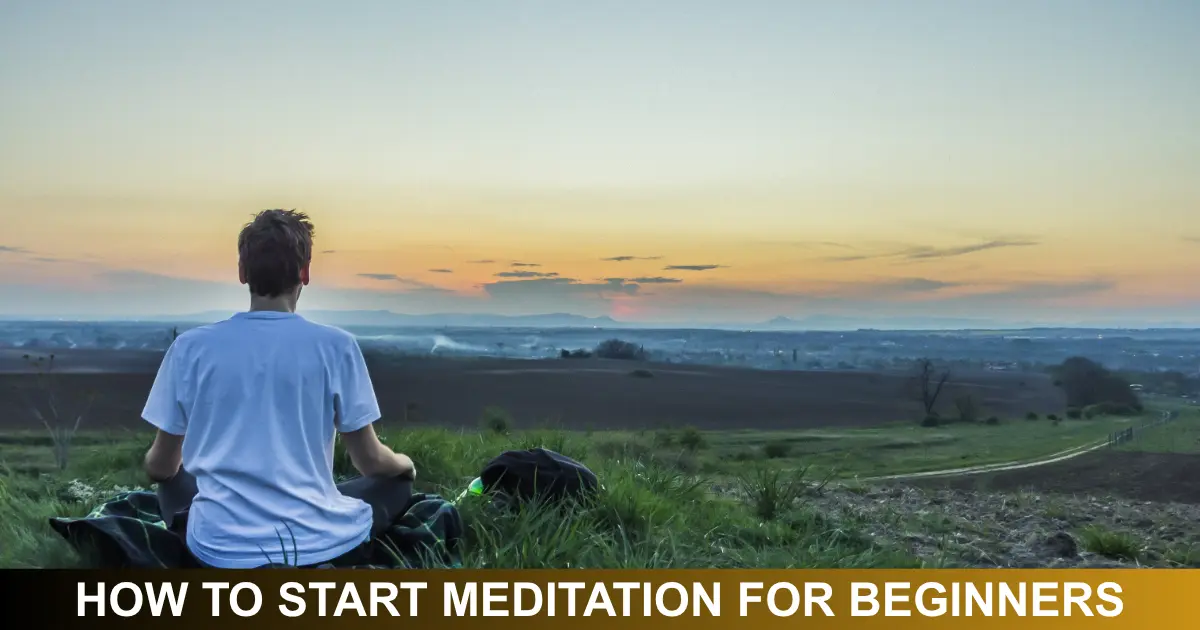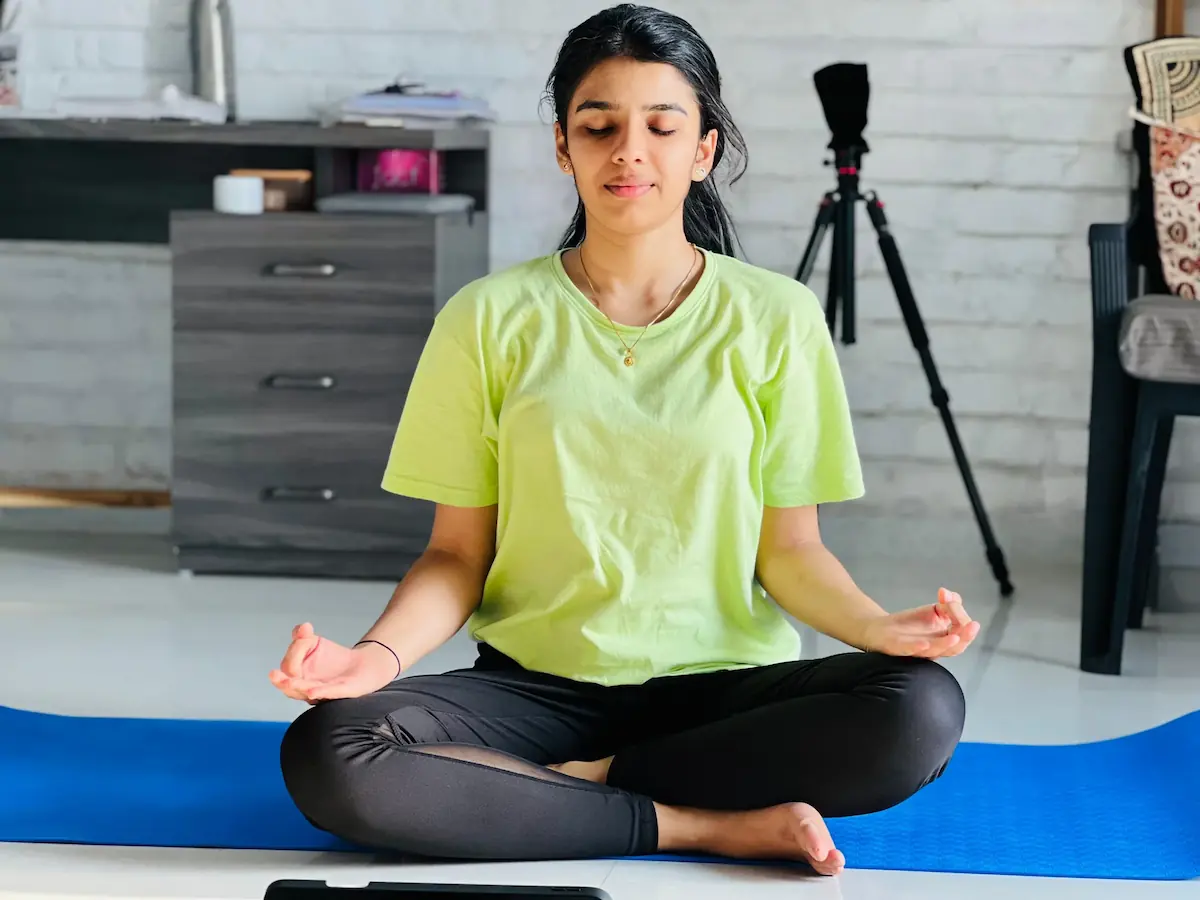Starting a meditation practice can transform your mental and physical well-being in profound ways. With scientific research showing that even brief daily sessions can reduce stress by up to 33% and improve cognitive function within just 8 weeks, meditation has never been more accessible or essential for modern life.
1. Understanding What Meditation Really Is
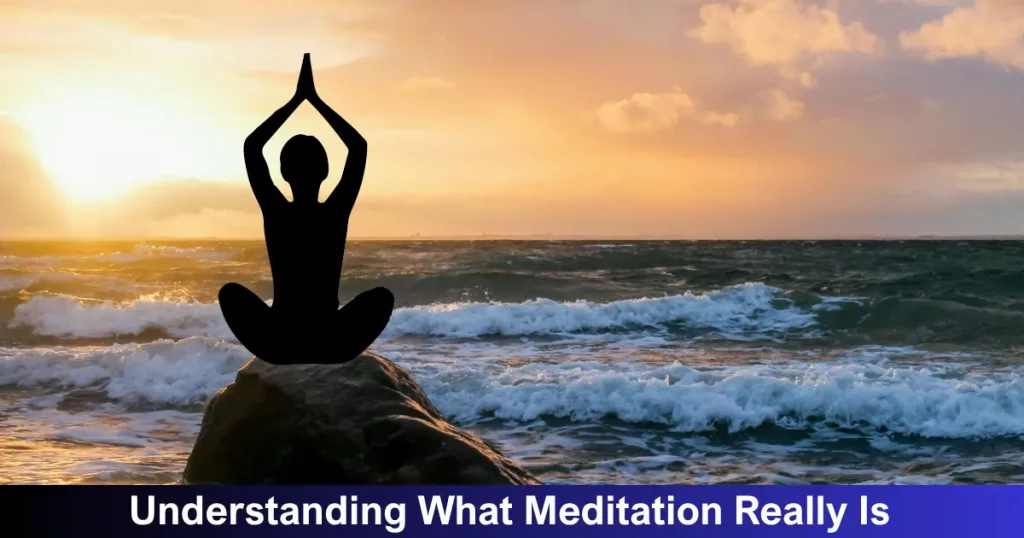
Meditation is fundamentally about training your attention and awareness. Unlike common misconceptions, it’s not about emptying your mind or achieving a state of constant bliss. Instead, meditation involves focusing on a chosen object typically your breath while observing thoughts and sensations as they arise without judgment.
The practice cultivates a delicate balance between relaxation and alertness. When you meditate, you’re essentially learning to change your relationship with your thoughts rather than eliminating them entirely. This mental training strengthens areas of the brain responsible for attention, emotional regulation, and self-awareness while reducing activity in regions associated with stress and anxiety.
2. The Science-Backed Benefits of Starting Meditation
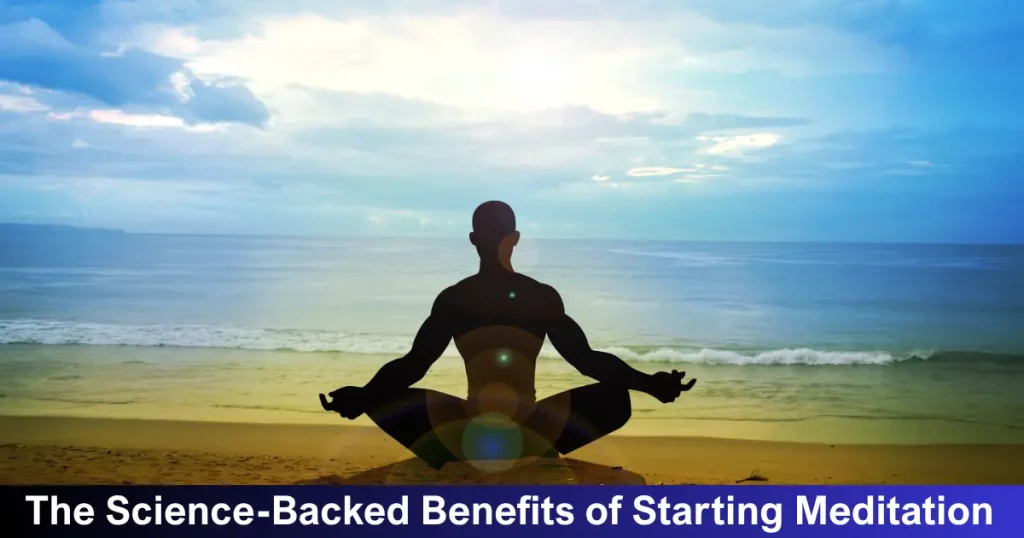
Read More: Cut Processed Foods in Daily Diet with These 10 Healthy Substitutes to Lower Cancer Risk
Mental Health Benefits
Recent research demonstrates meditation’s remarkable impact on psychological well-being. Studies show that regular practice significantly reduces anxiety (29% improvement), depression (32% improvement), and perceived stress (41% improvement). The mental health benefits include:
Enhanced Emotional Regulation: Meditation increases gray matter in brain regions responsible for emotional control while shrinking the amygdala, which processes fear and anxiety.
Improved Cognitive Function: Just 8 weeks of daily practice enhances attention, working memory, and recognition memory. Participants show increased focus and reduced mind-wandering during daily activities.
Better Sleep Quality: Mindfulness meditation helps regulate sleep patterns and reduces insomnia symptoms by calming the cognitive and emotional factors that contribute to sleep disturbances.
Physical Health Benefits
The physical benefits of meditation extend far beyond stress relief:
Cardiovascular Health: Regular practice lowers blood pressure, reduces heart rate, and decreases harmful compounds that contribute to atherosclerosis.
Immune System Boost: Research from the University of Wisconsin-Madison shows meditation improves immune system function and creates positive, lasting changes in brain structure.
Pain Management: Meditation alters pain perception in the brain, making practitioners less sensitive to chronic pain over time.
Inflammation Reduction: Harvard studies demonstrate that meditation dampens genes involved in inflammatory responses while promoting genes associated with DNA stability.
3. Creating Your Ideal Meditation Space

Finding the Right Location
Your meditation environment significantly impacts your practice quality. Choose a location that’s:
- Quiet and distraction-free: Turn off devices and inform household members about your practice time
- Comfortable temperature: Ensure you won’t be too hot or cold during sessions
- Consistently available: Using the same space helps condition your brain for meditation
- Naturally peaceful: A corner with soft lighting, cushions, or plants can enhance the calming atmosphere
You don’t need a perfect space any reasonably quiet area works. The key is consistency rather than perfection.
4. Mastering Meditation Postures
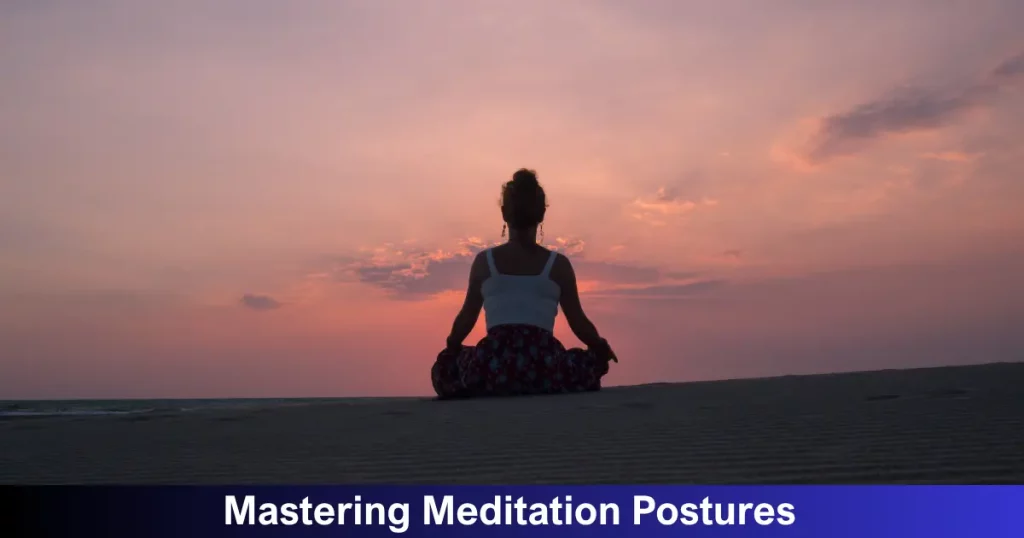
Seated Positions
Chair Meditation: Sit in the middle of a chair with feet flat on the floor, legs uncrossed, and hands resting on your thighs or in your lap. Keep your back straight but not rigid.
Cross-Legged Floor Position: Sit on a cushion with knees lower than hips. If flexibility is limited, stretch legs out in front or use wall support.
Traditional Postures: More advanced practitioners might explore siddhasana (one leg tucked under the opposite thigh) or lotus position, but these require flexibility and should be approached gradually.
Standing and Lying Down
Standing Meditation: Stand with feet hip-width apart, knees slightly bent, arms raised to mid-chest as if holding a large ball. This position cultivates both relaxation and alertness.
Lying Down: While sitting is preferred for maintaining alertness, lying down is acceptable if sitting causes discomfort. Place a pillow under your head and bend your knees to protect your lower back.
5. Essential Breathing Techniques for Beginners
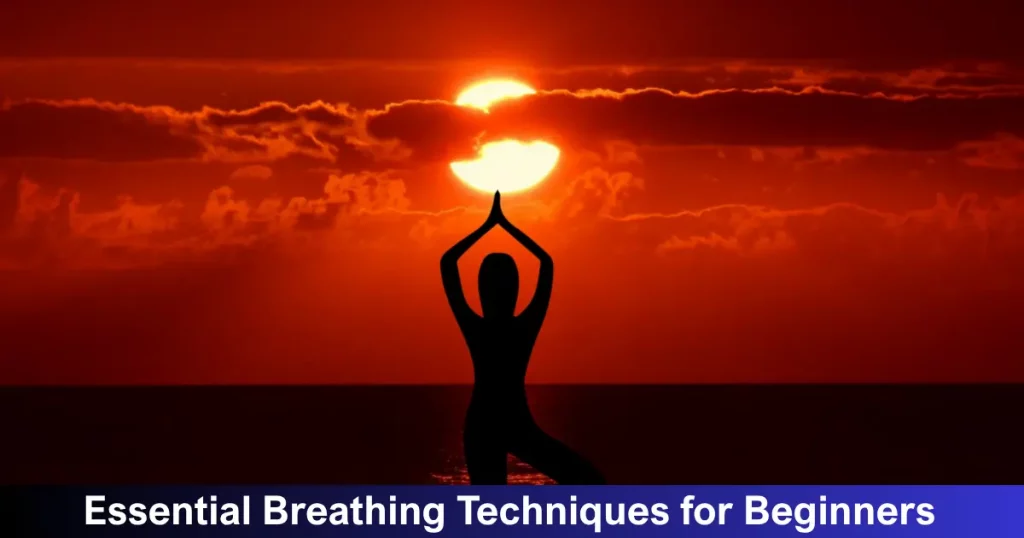
Read More: 7 Beginner Yoga Poses That Offer Maximum Health Benefits at Home
Basic Breath Awareness
Start with simple breath observation:
- Focus attention on the tip of your nose where breath enters and exits
- Breathe naturally without trying to control the rhythm
- When your mind wanders, gently return focus to the breath sensation
- Practice “noting” by mentally saying “in” and “out” with each breath
Advanced Breathing Methods
4-7-8 Breathing: Inhale for 4 counts, hold for 7, exhale for 8. This technique activates the parasympathetic nervous system for deep relaxation.
Box Breathing: Inhale for 4, hold for 4, exhale for 4, hold for 4. This creates mental focus and emotional stability.
Diaphragmatic Breathing: Place one hand on chest, one on belly. Breathe so only the belly hand moves, engaging the diaphragm for optimal oxygenation.
6. Your Step-by-Step Beginner’s Practice
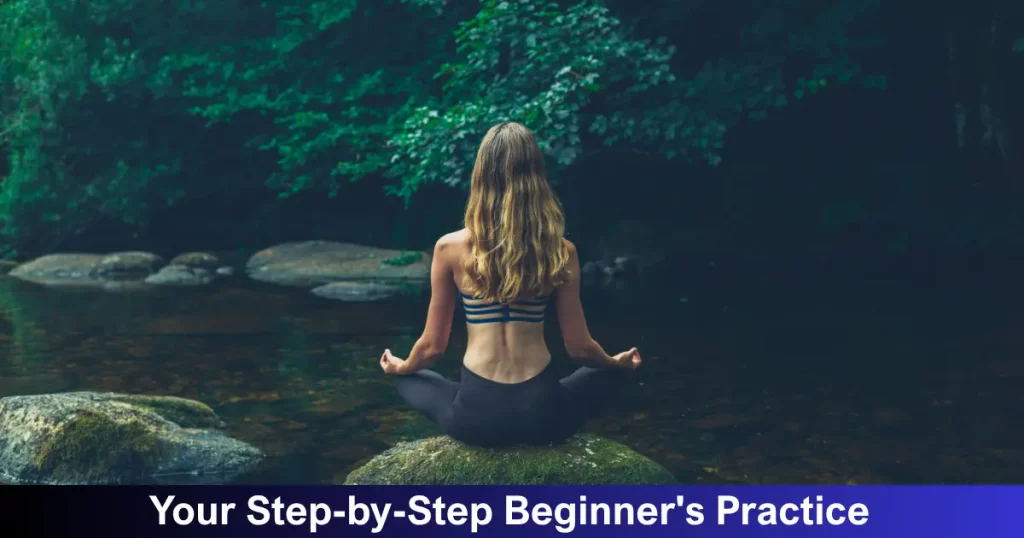
The Perfect Starting Routine
Week 1-2: Foundation Building
- Practice 2-3 minutes daily at the same time
- Focus solely on breath awareness
- Don’t worry about “doing it right” showing up is success
Week 3-4: Expanding Awareness
- Increase to 5-7 minutes daily
- Add brief body awareness after breath focus
- Begin noting when mind wanders without judgment
Week 5-8: Deepening Practice
- Work up to 10-15 minutes daily
- Experiment with different techniques (loving-kindness, body scan)
- Start applying mindfulness principles to daily activities
Daily Session Structure
- Settle In (1 minute): Find your position, close eyes, take three deep breaths
- Focus (main portion): Return attention to breath whenever mind wanders
- Expand (final 2-3 minutes): Include awareness of sounds, sensations, thoughts
- Transition (30 seconds): Gently open eyes and slowly return to activity
7. Common Beginner Mistakes to Avoid
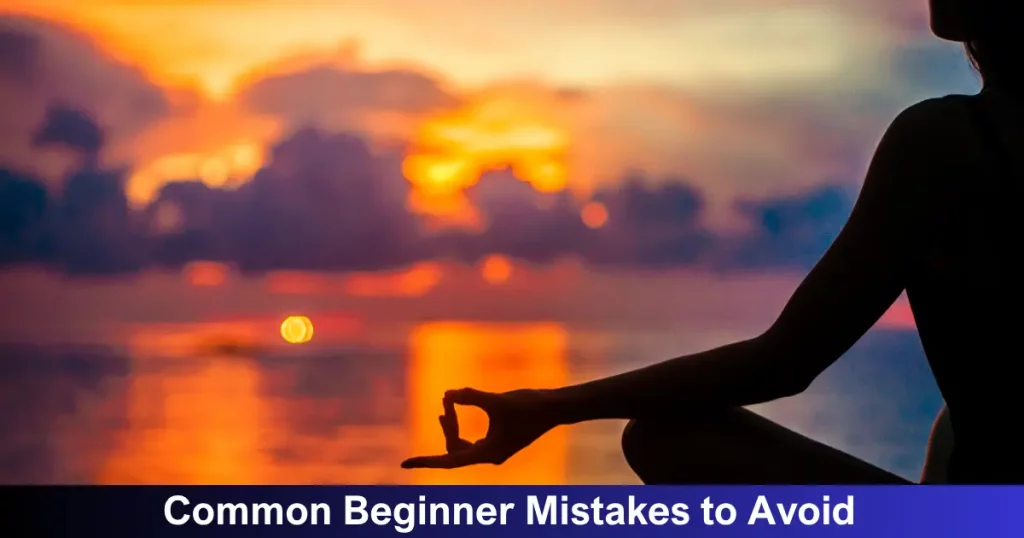
Expectation Traps
Seeking Immediate Relaxation: Meditation isn’t always relaxing initially. Expect restlessness, discomfort, or boredom these are normal parts of the process.
Demanding Quick Results: While some benefits appear within weeks, significant changes typically require 8-12 weeks of consistent practice. Patience is essential.
Judging Your Experience: There’s no “perfect” meditation. Some sessions will feel better than others, and that’s completely natural.
Practice Mistakes
Inconsistent Timing: Daily practice matters more than session length. Five minutes every day beats 30 minutes once weekly.
Over-Relying on Guided Meditations: While helpful initially, eventually practice in silence to develop independent focus skills.
Choosing Wrong Times: Morning practice often works best as it’s easier to maintain consistency and sets a positive tone for the day.
Starting Too Long: Beginning with extended sessions often leads to frustration and quitting. Start small and build gradually.
8. Building a Sustainable Daily Practice
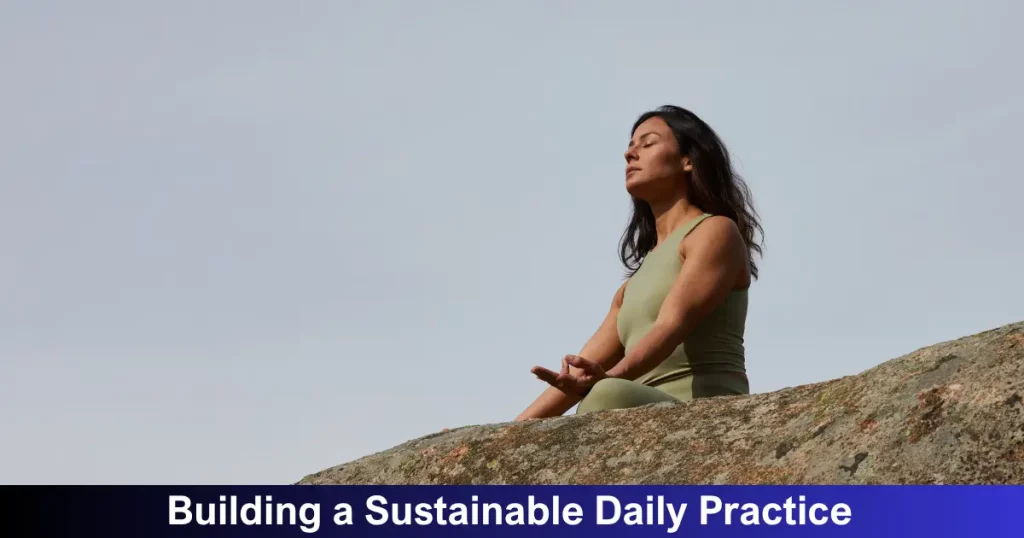
Creating Consistency
Anchor to Existing Habits: Link meditation to established routines like morning coffee or evening tooth brushing. This psychological trick reduces resistance to the new practice.
Set Realistic Goals: Commit to what you can maintain long-term rather than ambitious targets you’ll abandon. Consistency trumps intensity.
Track Your Progress: Use a simple calendar or app to mark completed sessions. Visible progress encourages continuation.
Overcoming Common Challenges
“I Don’t Have Time”: Even one minute counts. Use waiting periods, commute time, or replace one social media scroll with brief mindful breathing.
“My Mind Won’t Stop Racing”: This is meditation working, not failing. Each time you notice mind-wandering and return to breath, you’re strengthening awareness.
“I Keep Forgetting”: Set phone reminders, leave notes in visible places, or ask a friend to check in on your practice.
9. Expanding Your Practice
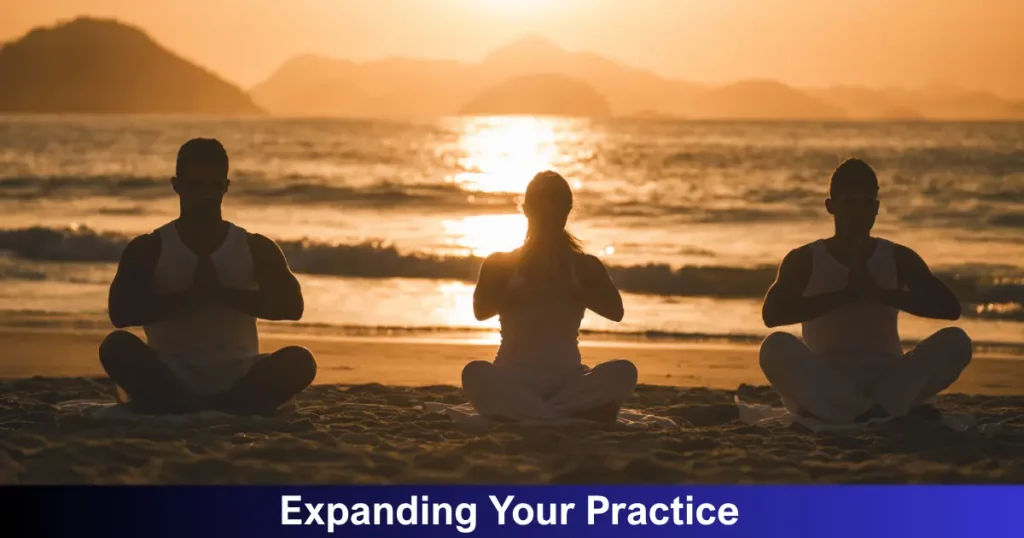
Complementary Activities
Mindful Movement: Yoga, walking meditation, or tai chi integrate meditation principles with physical activity[original]. These practices calm the nervous system while building body awareness.
Mindful Journaling: Write about insights, emotions, or experiences from practice. This reflection deepens self-understanding and tracks progress[original].
Daily Life Integration: Apply meditation principles during routine activities mindful eating, conscious listening, or present-moment awareness during chores.
Exploring Different Techniques
Body Scan Meditation: Systematically focus attention on different body parts, noticing sensations without trying to change them.
Loving-Kindness Practice: Cultivate compassion by sending well-wishes to yourself, loved ones, neutral people, and even difficult individuals.
Walking Meditation: Practice mindful awareness while moving slowly, focusing on the sensations of each step.
10. When and How to Seek Guidance

Read More: Best Superfoods to Boost Your Weight Loss Journey , Cut Processed Foods in Daily Diet with These 10 Healthy Substitutes to Lower Cancer Risk, 7 Healthy Recipes to Boost Your Holistic Wellness Routine
Finding Support
Local Classes: Group meditation provides structure, community support, and expert instruction. Many community centers and studios offer beginner-friendly sessions.
Apps and Online Resources: Quality apps like Headspace and Calm offer structured programs, though avoid becoming overly dependent on them.
Books and Resources: Supplement practice with reputable meditation books, but remember that reading about meditation isn’t practicing it.
Retreats and Workshops: Once established in daily practice, intensive retreats can deepen understanding and commitment.
Frequently Asked Questions
How long should beginners meditate each day?
Start with just 2-5 minutes daily for the first week, then gradually increase by 1-2 minutes weekly until reaching 10-20 minutes. Research shows that even 10-15 minutes daily provides significant benefits, while 8 weeks of 13-minute sessions improved attention, memory, and mood in beginners. Consistency matters more than duration five minutes every day beats longer sessions done sporadically.
What’s the best time of day to meditate?
Morning meditation is generally most effective for beginners because it’s easier to maintain consistency and sets a positive tone for the day. The mind is typically calmer after waking, before daily stresses accumulate. However, any time that fits your schedule consistently works well. Some people prefer evening sessions to unwind, while others benefit from brief midday practices to reset their energy.
Is it normal for my mind to wander constantly during meditation?
Absolutely this is completely normal and actually shows that meditation is working. The human mind naturally produces thousands of thoughts daily, and this becomes obvious when we try to focus. Each time you notice your mind has wandered and gently return attention to your breath, you’re strengthening your awareness muscle. This is the practice, not a failure.
Can I meditate lying down, or must I sit upright?
While sitting upright is generally recommended because it maintains alertness and prevents sleep, lying down is acceptable if sitting causes physical discomfort. If you choose to lie down, bend your knees with feet flat on the floor and place a thin pillow under your head to protect your lower back. The key is finding a position you can maintain comfortably without falling asleep.
Should I use meditation apps or practice in silence?
Meditation apps can be excellent for beginners, providing structure and guidance when starting out. However, gradually transition to practicing in silence as you develop confidence. Over-reliance on guided sessions can prevent you from developing independent meditation skills. Use apps as training wheels, but aim to eventually meditate without constant guidance.
What should I do when I feel restless or uncomfortable during meditation?
Restlessness is a normal part of meditation, especially for beginners. Instead of fighting these feelings, observe them with curiosity and return focus to your breath. Physical discomfort might indicate you need to adjust your posture make small movements mindfully rather than enduring pain. Remember that meditation isn’t about achieving perfect stillness but about developing awareness of whatever arises.
How do I know if meditation is working for me?
Benefits often appear subtly over time rather than dramatically. Notice if you’re slightly less reactive to stress, sleeping a bit better, or finding more moments of calm during your day. Some people experience changes within 2-4 weeks, while deeper transformations typically emerge after 8-12 weeks of consistent practice. Keep a simple journal noting your mood and stress levels to track gradual improvements.
Can children learn to meditate?
Yes, children can learn meditation, though it looks different than adult practice. Kids often respond well to shorter sessions (2-5 minutes), movement-based practices, or guided visualizations. Teaching children simple breathing techniques or body awareness can help them develop emotional regulation skills early. Many schools now incorporate brief mindfulness practices into daily routines.
Is meditation religious, and do I need specific beliefs to practice?
While meditation has roots in various spiritual traditions, modern mindfulness meditation is completely secular and based on scientific research. You don’t need any particular religious beliefs to benefit from meditation it’s simply a mental training technique. Many people practice meditation purely for its proven health and cognitive benefits without any spiritual component.
What’s the difference between meditation and mindfulness?
Meditation is the formal practice of training attention and awareness, typically done in dedicated sessions. Mindfulness is the quality of present-moment awareness that meditation develops, which can then be applied throughout daily life. Think of meditation as going to the gym for your mind, while mindfulness is the strength and flexibility you gain that helps in all activities.
How much does it cost to start meditating?
Meditation itself costs nothing you need no special equipment or memberships. You can learn basic techniques from free resources, YouTube videos, or library books. Optional purchases might include a cushion for comfort ($20-50), books ($10-20), or premium app subscriptions ($5-15/month). Many communities offer free or low-cost meditation groups, making it one of the most accessible wellness practices available.
Can meditation help with specific health conditions?
Research shows meditation can support management of various conditions including anxiety, depression, chronic pain, high blood pressure, and insomnia. However, meditation should complement, not replace, professional medical treatment. Always consult healthcare providers about your specific situation and consider meditation as one part of a comprehensive wellness approach.
Summary
Starting meditation as a beginner requires patience, consistency, and realistic expectations rather than perfection. The practice offers scientifically-proven benefits including stress reduction, improved focus, better emotional regulation, and enhanced physical health. Success comes from establishing a simple daily routine even just 5-10 minutes and gradually building your practice over time.
Remember that meditation is a skill that develops through regular practice. Your wandering mind isn’t a problem to solve but rather the raw material for developing greater awareness and mental flexibility. By starting small, staying consistent, and approaching the practice with curiosity rather than judgment, you’ll discover meditation’s transformative power for creating a calmer, more focused, and resilient mind.
The journey of meditation has no final destination it’s an ongoing exploration of present-moment awareness that enriches every aspect of daily life. Begin today with just a few mindful breaths, and trust that each moment of practice contributes to your overall well-being and inner peace.
